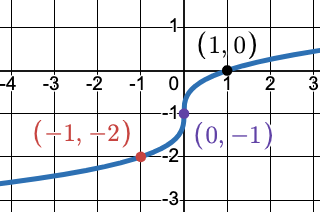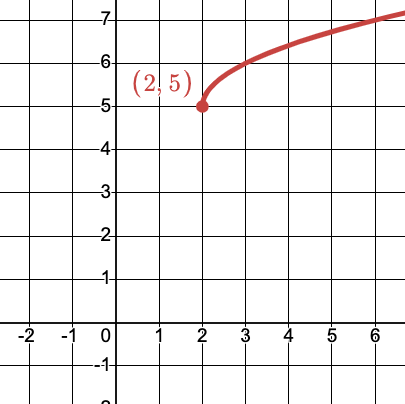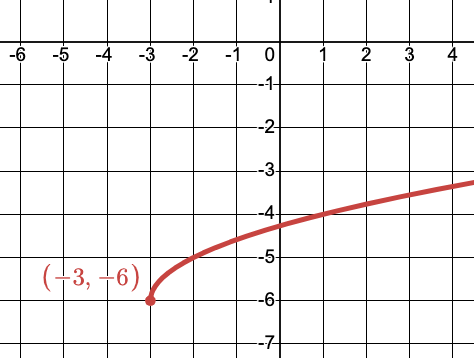List all subsets of the real numbers from the list below that the number belongs to.
Whole, Integers, Rational, Irrational, & Real Numbers
0
Whole, Integers, Rational, Real
Write each radical using rational exponents.
root(4)(2^-5)
2^(-5/4)
Find the amount in the account for the given principal, interest rate, time and compounded period.
P=800, r=6%, t=9 years; compounded quarterly
1,367.31
Write an expression for the funciton.
a translation by 2 units down and 1 unit to the left of
f(x)=sqrtx
f(x)=sqrt(x+1)-2
Graph the function and identify the domain and range.
f(x)=root(3)x-1

D: (-infty,infty) R: (-infty,infty)
What is the only continent without a volcano?
Australia
List all subsets of the real numbers from the list below that the number belongs to.
Whole, Integers, Rational, Irrational, & Real Numbers
-29
Integers, rational, real
Write each radical using rational exponents.
sqrt(b^\a
b^(a/2)
Find the amount in the account for the given principal, interest rate, time and compounded period.
P=1,500, r=4.5%, t=3 years; compounded daily
1,716.79
Graph and determine the domain and range!
S(x)=sqrt(x-2)+5

D: x>=2, R: y>=5
Graph the function and identify the domain and range.
f(x)=root(3)(x+2)

D:(-infty,infty) R: (-infty,infty)
What was the first fully CGI feature film?
Toy Story
Order the shown from least to greatest:
1/3, 0.1666, sqrt(1/4)
0.16, 1/3, sqrt(1/4)
Solve the Equation
625^(2x-3)=25^(3x-2)
x=4
Find the amount in the account for the given principal, interest rate, time and compounded period.
P=1,000, r=2.8%, t=5 years; compounded continuously
1,150.27
Graph and determine the domain and range!
t(x)=sqrt(x+3)-6

D:x>=-3, R:y>=-6
Describe translations that transforms the graph of
f(x)=root(3)x
q(x)=root(3)(x+7)
shift left 7 units
What is the name of the largest ocean on earth?
Pacific Ocean
Determine whether the following difference represents a rational or irrational number.
6/23- sqrt2/2
Irrational
Solve the Equation
(1/243)^(-x/3)=(1/9)^(-x/2+1)
x=-3
Find the amount in the account for the given principal, interest rate, time and compounded period.
P=16,000, r=4%, t=25 years; compounded continuously
43,492.51
Find the x- and y-intercepts of the function. If there is no intercept, write DOES NOT EXIST.
k(x)=sqrt(x+4)-9
x=77, y=-7
Describe translations that transforms the graph of
f(x)=root(3)
j(x)=root(3)(x+4)-8
shift left 4 units and shift down 8 units
Which Electronic duo is known for hits like "Get Lucky"?
Daft Punk